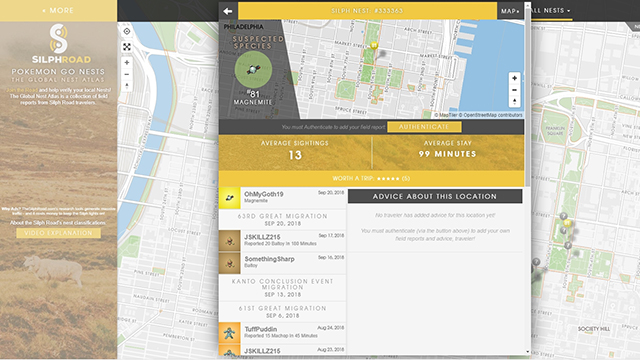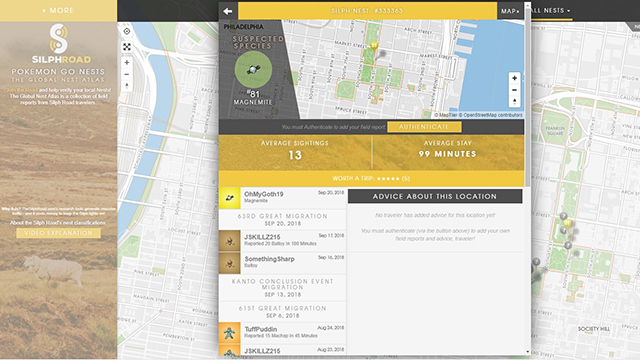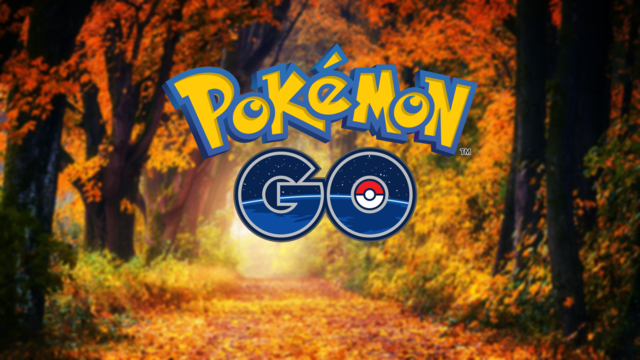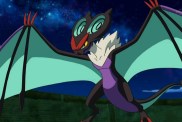The Pokemon Go parks notification is probably a common sight on your phone if you’ve been playing Pokemon Go for more than a few weeks. It’s nothing new, but the push notification is ambiguous for a reason and stops a more casual audience from getting too confused by the intricate details and systems of the game. The Pokemon Go parks notification sneakily alerts you to a change in Pokemon Go nests, but you won’t really know what these are without some deeper research.
Pokemon Go Parks: What Are Pokemon Go Nests?

The Pokemon Go parks notification simply tells you that new Pokemon may be appearing in your local area, encouraging players to venture out and tread across familiar territory to hopefully discover something new.
This doesn’t mean that a brand new Pokemon is suddenly available, but instead means a different species of Pokemon may show up in a place you wouldn’t normally find it. This phenomenon is known as a Nest, and it’s a great way to catch multiple of the same rare Pokemon to boost your candy count or otherwise bulk up a rare and strong fighter.
The reason you’ll see the Pokemon Go parks notification multiple times is because Pokemon Go nests change every two weeks; specifically on a Thursday. Players in the US should wake up every other Thursday to a few different spawns on their commute, whereas European players will notice it more in the early afternoon.
Pokemon Go nests are areas, like parks or shopping districts, where a certain uncommon or rare Pokemon might appear more reliably. If you’ve noticed a bunch of a single Pokemon spawn in a tight-knit area before, chances are you stumbled upon a Pokemon Go nest.
While these areas rarely change location, the species of Pokemon spawning within changes every two weeks. This means the park where you found 8+ Eggexcute a few weeks back may now spawn multiple of a different Pokemon instead. This is known as a “migration”. You won’t know which Pokemon is about to migrate to any given location ahead of time, but tools like The Silph Road Atlas, in which travelers report their findings to help build a more current nest map, will help you know which local areas are worth a trip out for.
Pokemon Go Parks: What Are Pokemon Go Biomes?
A far less talked about spawn mechanic is that of biomes. Just like nest and cluster spawns, Pokemon Go biomes are a purely unofficial term used to describe areas of a map where specific types of Pokemon have been found.
You won’t find any mention of biomes within Pokemon Go, but players in your area might tell you of a Water or Rock biome that you can visit for an increased chance of certain Pokemon.
As not much research into this spawn phenomenon has taken place over the last two years, much of what we think we know about Pokemon Go biomes is nothing more than speculation.
The idea behind Pokemon Go biomes is that the Pokemon Go map is split into type-specific biomes that influence the kinds of Pokemon that spawn in an area. A common idea of this is more water Pokemon, like Dratini and Magikarp, spawning close to bodies of water, and rural Pokemon like Grimer, Pidgey, and Rattata staying close to residential areas.
This isn’t to say you’re more likely to come across Trapinch and Cacnea by driving out into the desert, but it’s something to keep in mind if you’re left wondering why you can’t find a reliable source of Wailmer in the middle of a motorway.
Pokemon Go Parks: What Are Pokemon Go Cluster Spawns?

Another type of Pokemon Go spawn anomaly is known as a “cluster spawn”. Like Pokemon Go nests, cluster spawns are an entirely unofficial name given to what is otherwise a player-made discovery. Cluster spawns aren’t quite as exciting as Pokemon Go nests, but still serve a purpose. Where nests spawn multiple of a single rare or uncommon Pokemon, cluster spawns generate lots of more common species. The term has changed since the early days of the game, but this is the more widely understood idea at the moment.
You’re not any more likely to find a rare or elusive Pokemon hidden in a cluster spawn, but they can be great ways for players to make the most of things like a Lucky Egg or Star Piece in quieter areas to quickly grab candy for more common Pokemon for use in EXP farming methods (like mass evolutions).
Cluster spawns aren’t typically logged on a site like The Silph Road like nest spawns, but is a spawn phenomenon you’ll come across just by walking through your town. Cluster spawns aren’t as easy to pinpoint as nests as they can occur seemingly anywhere rather than just in parks and larger community areas. If you’ve noticed an unusual amount of Pokemon spawn into your game in a specific place, you’ve probably found a cluster spawn. Make note of it.
Unlike nest spawns, the Pokemon you find here won’t really change at a specific time, but the cluster spawn location will usually remain the same, too, meaning you can slowly plot a reliable spawn route by walking around.
For me, there’s a cluster spawn at the end of my street and on the corner of a nearby industrial estate. That means I can walk into town for PokeStops and loop back around to catch the two cluster spawns again.
There’s a slim chance of me finding some new and elusive Pokemon, but the larger than normal spawns means I’m sure to get more candy and stardust with that route than I would just aimlessly wandering around town.
Pokemon Go Parks: What Can Spawn In A Pokemon Go Nest?
With the growing amount of Pokemon available in Pokemon Go, there’s a good chance your local nest locations will fairly useless from time to time.
While you might have two weeks of near-endless Growlithe spawns in your local park, that might switch to a paltry Paras nest soon after. You can’t predict which Pokemon will migrate to your local Pokemon Go park at the end of a nest rotation, but you can help curb your excitement by understanding which Pokemon can or can’t take up residence in a Pokemon Go nest.
The general rule is that Pokemon you can’t find in the wild (like legendary or baby Pokemon) won’t suddenly appear in a nest area, and neither will evolved Pokemon. You can still happen upon a wild Charizard in these zones if you’re lucky enough, but don’t go expecting 4-5 of these every half an hour like you would a true nest spawn.
There’s no fully confirmed list of Pokemon Go nest spawns, but don’t expect to find ultra rare Pokemon. Instead, be on the lookout for Pokemon you’d want from 5km eggs like Scyther, Onix, or Duskull, or starter Pokemon like Torchic, Charmander, and Cyndaquil to help you obtain the candy needed for these rare evolutions.







